Abstract
The effects of drugs on smooth muscle strips of human taenia coli, obtained from operation specimens, were studied in vitro. Both nicotinic and muscarinic sites of action of acetylcholine were demonstrated, the nicotinic effect being a relaxation. The sympathomimetic amines, adrenaline, noradrenaline, and isoprenaline produced a relaxation of the tissue by an action on adrenaline α- and β-receptors. The presence of both types of receptor was demonstrated by selective adrenergic blockade with pronethalol or Hydergine. Pronethalol in high concentrations gave a nonselective adrenergic blockade. The ganglion-stimulating agents nicotine and dimethylphenylpiperazinium produced a relaxation of the tissue in all concentrations. This relaxation was inhibited by pronethalol or physostigmine but no contractile component to ganglion stimulation was revealed when these two drugs were present together. These results indicate the presence of either sympathetic ganglia in the intrinsic nerve plexuses, or adrenergic stores in the bowel wall. There is no pharmacological evidence for parasympathetic ganglia in human sigmoid colon. Histamine produced relaxant, contractile or biphasic responses. The type of response was independent of the “tone” of the preparation. The responses were not modified by procaine, hyoscine or pronethalol, which result indicates that both the contractile and relaxant responses to histamine were due to a direct action of the drug on smooth muscle. 5-Hydroxytryptamine produced either a contraction or a relaxation of the tissue. The relaxation was due to a direct effect of the drug, since hexamethonium, procaine or pronethalol did not affect the response. No conclusions have been drawn regarding the mechanism of the contractile response to 5-hydroxytryptamine. The nature of the responses of the tissue to drugs was independent of the disease for which the specimen of colon was removed.
Full text
PDF
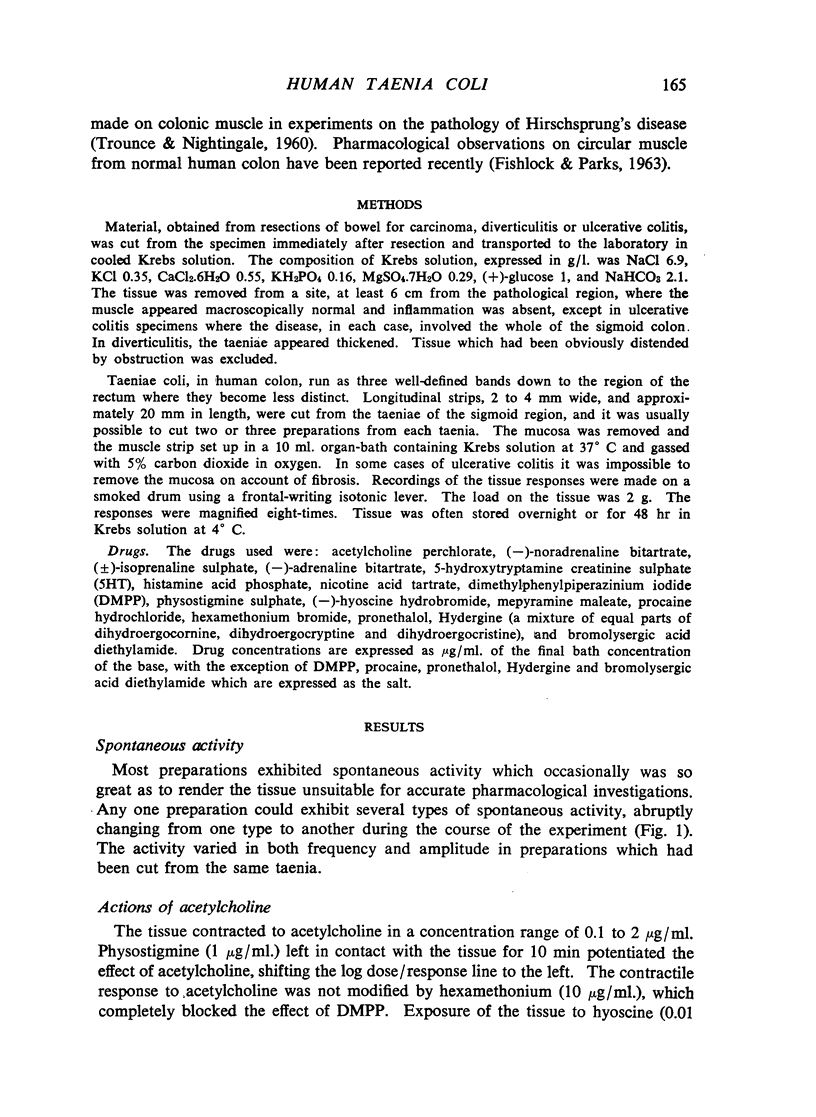

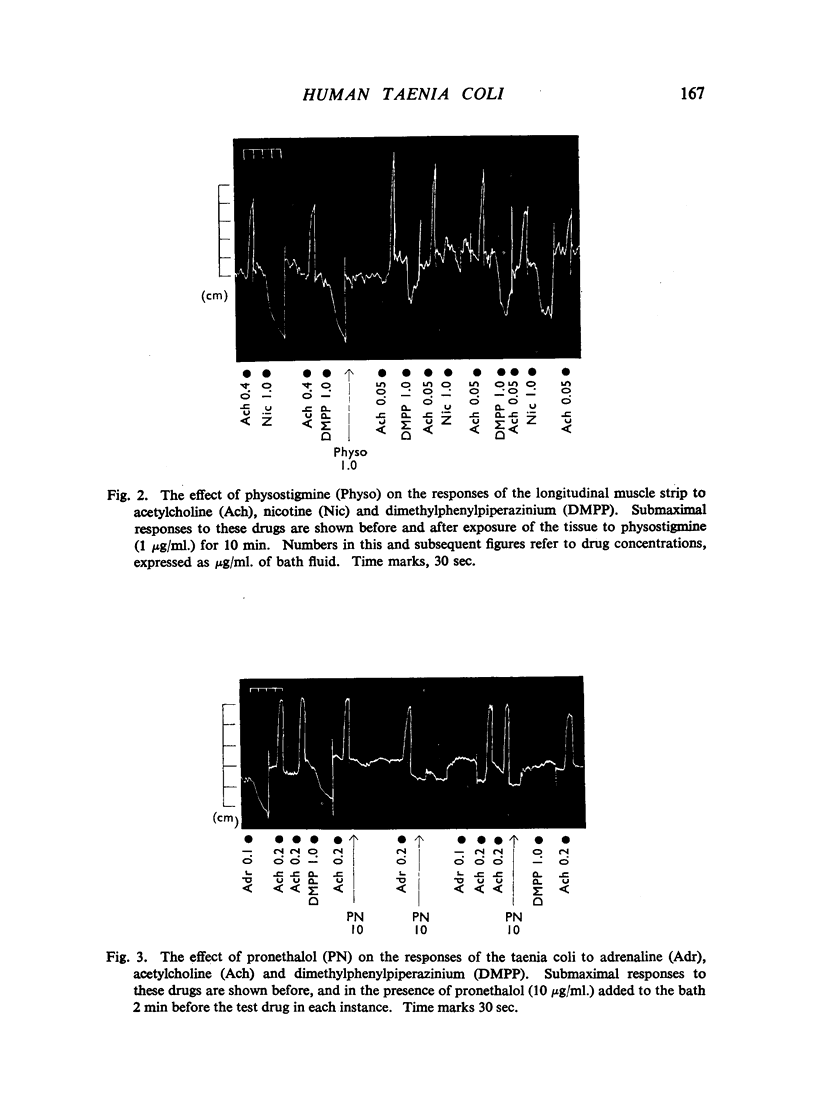
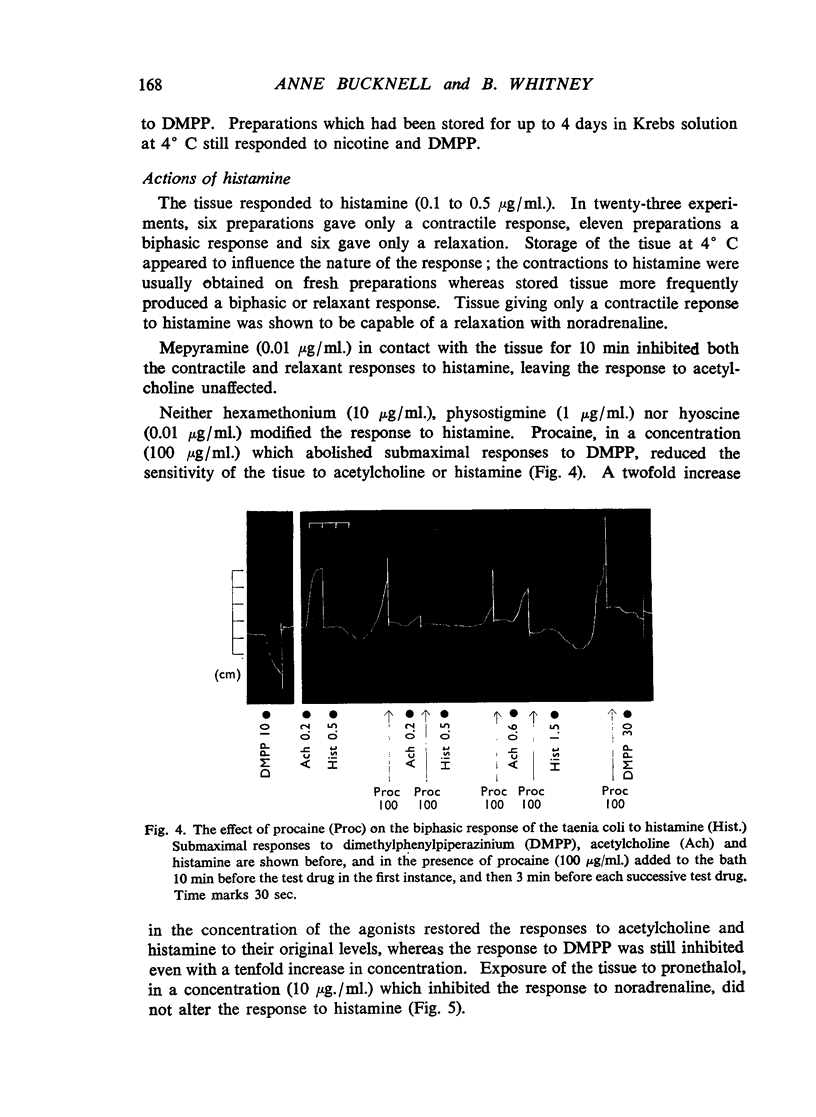
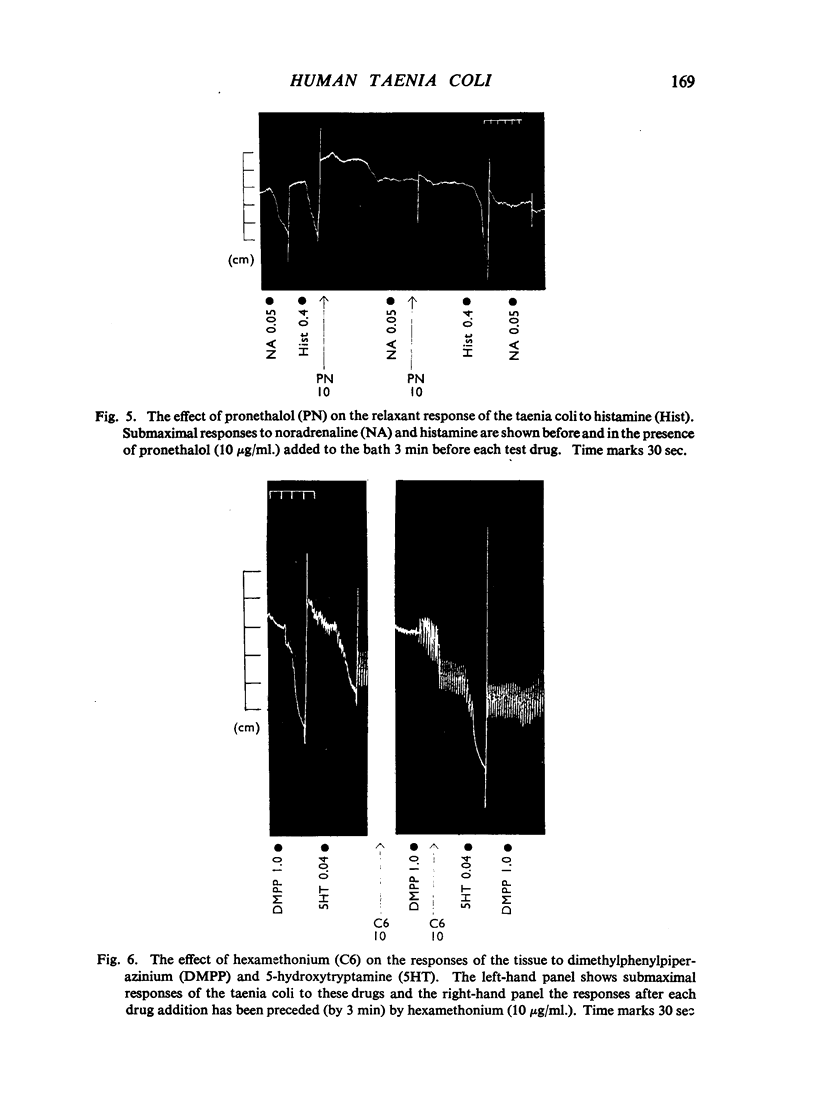
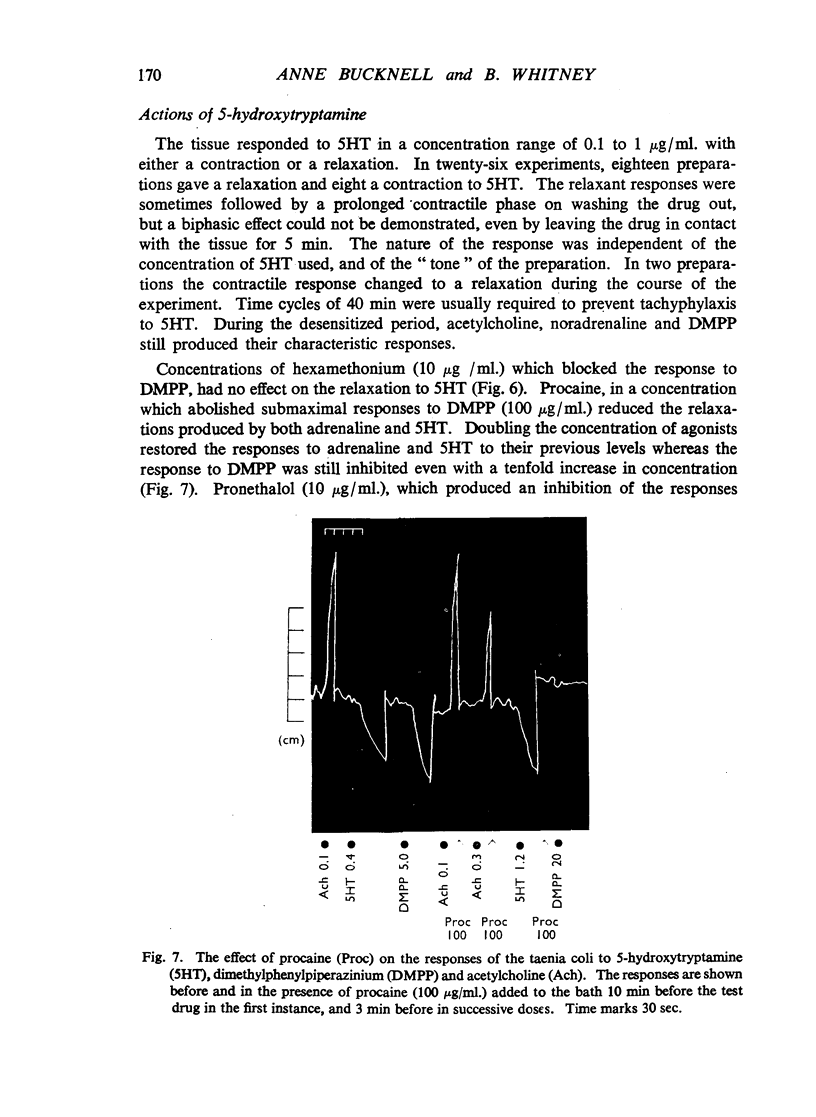

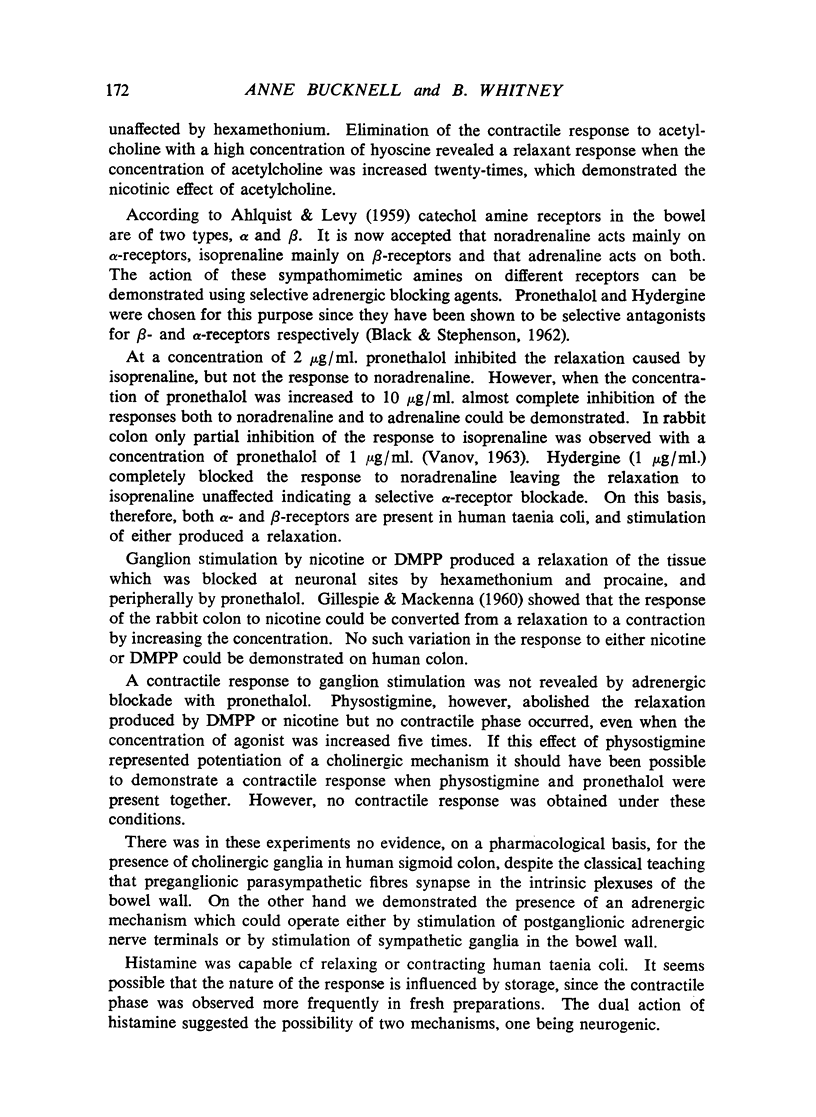
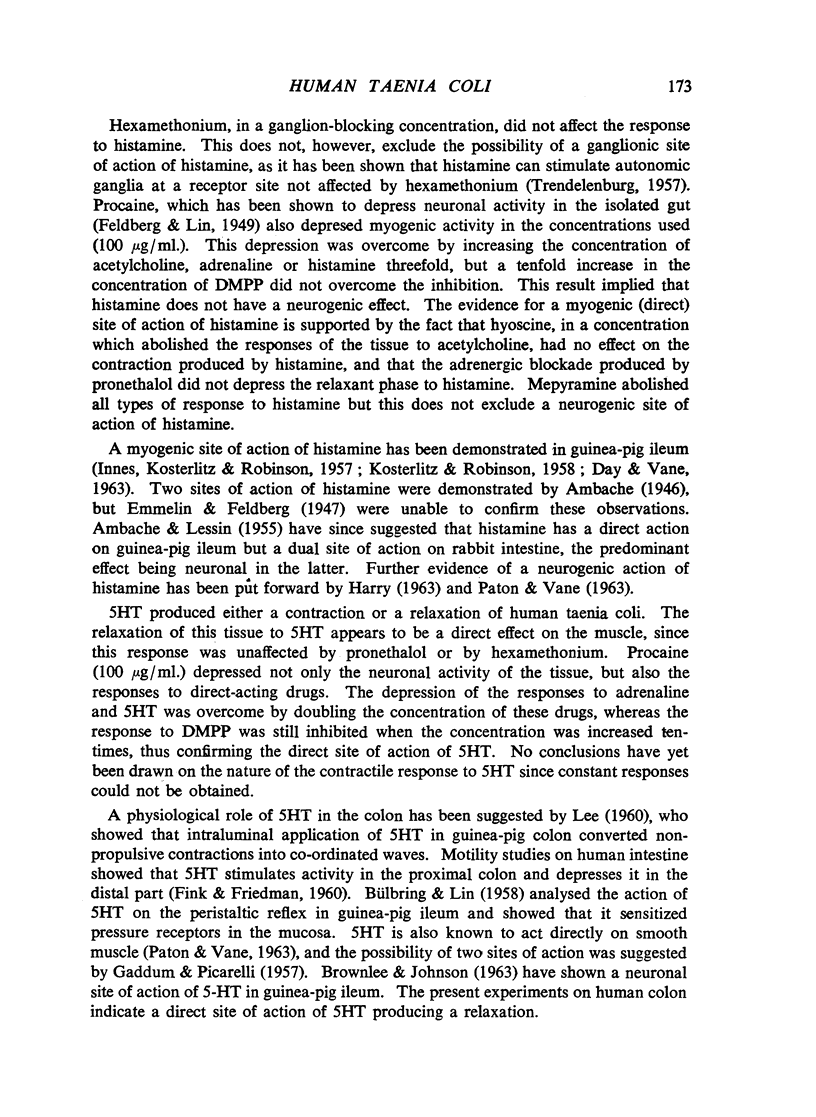
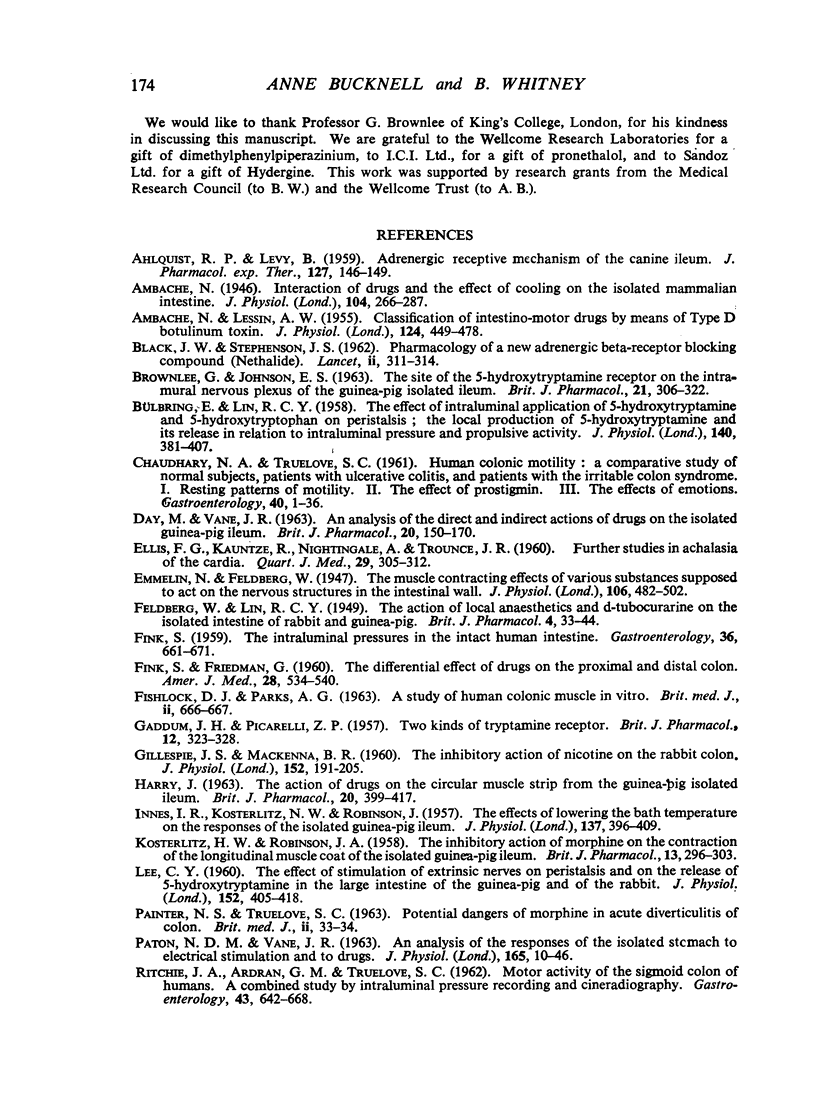
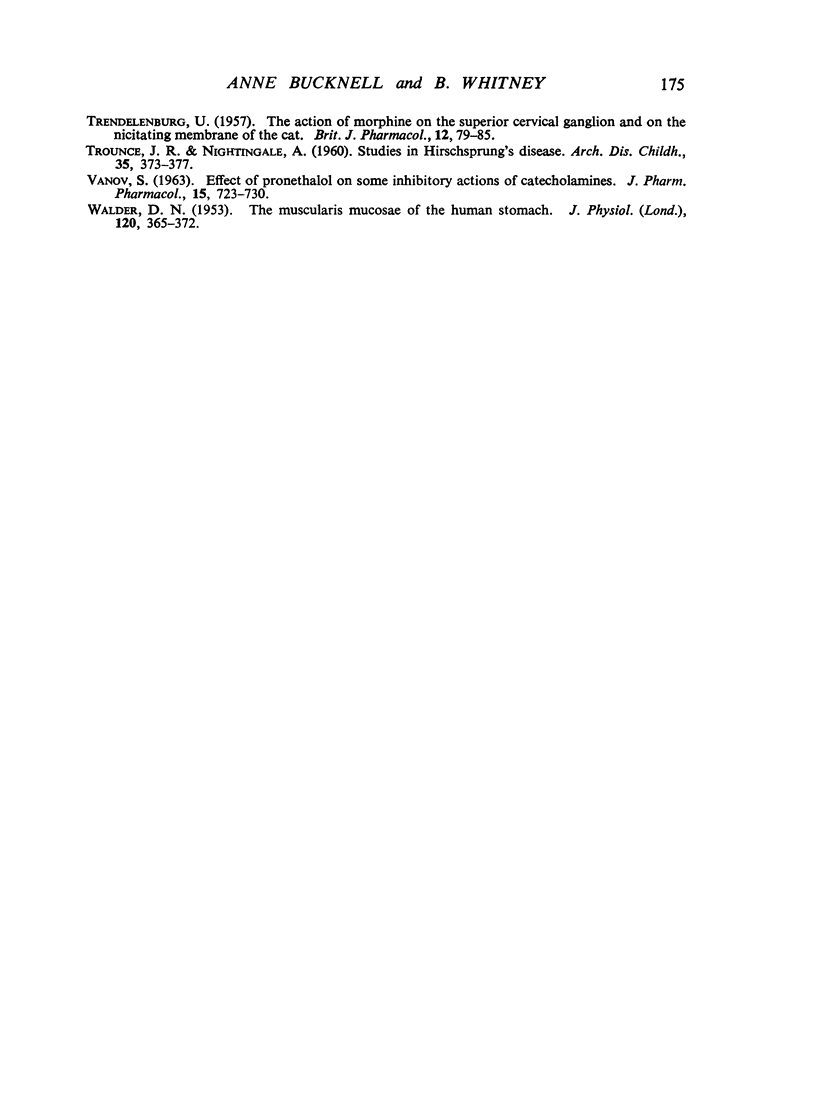
Selected References
These references are in PubMed. This may not be the complete list of references from this article.
- AHLQUIST R. P., LEVY B. Andrenergic receptive mechanism of canine ileum. J Pharmacol Exp Ther. 1959 Oct;127:146–149. [PubMed] [Google Scholar]
- AMBACHE N., LESSIN A. W. Classification of intestinomotor drugs by means of type D botulinum toxin. J Physiol. 1955 Mar 28;127(3):449–478. doi: 10.1113/jphysiol.1955.sp005270. [DOI] [PMC free article] [PubMed] [Google Scholar]
- Ambache N. Interaction of drugs and the effect of cooling on the isolated mammalian intestine. J Physiol. 1946 Jan 15;104(3):266–287. doi: 10.1113/jphysiol.1946.sp004120. [DOI] [PMC free article] [PubMed] [Google Scholar]
- BLACK J. W., STEPHENSON J. S. Pharmacology of a new adrenergic beta-receptor-blocking compound (Nethalide). Lancet. 1962 Aug 18;2(7251):311–314. doi: 10.1016/s0140-6736(62)90103-4. [DOI] [PubMed] [Google Scholar]
- BROWNLEE G., JOHNSON E. S. THE SITE OF THE 5-HYDROXYTRYPTAMINE RECEPTOR ON THE INTRAMURAL NERVOUS PLEXUS OF THE GUINEA-PIG ISOLATED ILEUM. Br J Pharmacol Chemother. 1963 Oct;21:306–322. doi: 10.1111/j.1476-5381.1963.tb01529.x. [DOI] [PMC free article] [PubMed] [Google Scholar]
- BULBRING E., LIN R. C. The effect of intraluminal application of 5-hydroxytryptamine and 5-hydroxytryptophan on peristalsis; the local production of 5-HT and its release in relation to intraluminal pressure and propulsive activity. J Physiol. 1958 Mar 11;140(3):381–407. [PMC free article] [PubMed] [Google Scholar]
- CHAUDHARY N. A., TRUELOVE S. C. Human colonic motility: a comparative study of normal subjects, patients with ulcerative colitis, and patients with the irritable colon syndrome. III. Effects of emotions. Gastroenterology. 1961 Jan;40:27–36. [PubMed] [Google Scholar]
- DAY M., VANE J. R. An analysis of the direct and indirect actions of drugs on the isolated guinea-pig ileum. Br J Pharmacol Chemother. 1963 Feb;20:150–170. doi: 10.1111/j.1476-5381.1963.tb01306.x. [DOI] [PMC free article] [PubMed] [Google Scholar]
- ELLIS F. G., KAUNTZE R., NIGHTINGALE A., TROUNCE J. R. Further studies in achalasia of the cardia. Q J Med. 1960 Apr;29:305–312. [PubMed] [Google Scholar]
- Emmelin N., Feldberg W. The smooth muscle contracting effects of various substances supposed to act on nervous structures in the intestinal wall. J Physiol. 1947 Oct 15;106(4):482–502. doi: 10.1113/jphysiol.1947.sp004229. [DOI] [PMC free article] [PubMed] [Google Scholar]
- FINK S., FRIEDMAN G. The differential effect of drugs on the proximal and distal colon. Am J Med. 1960 Apr;28:534–540. doi: 10.1016/0002-9343(60)90147-9. [DOI] [PubMed] [Google Scholar]
- FINK S. The intraluminal pressures in the intact human intestine. Gastroenterology. 1959 May;36(5):661–671. [PubMed] [Google Scholar]
- FISHLOCK D. J., PARKS A. G. A STUDY OF HUMAN COLONIC MUSCLE IN VITRO. Br Med J. 1963 Sep 14;2(5358):666–667. doi: 10.1136/bmj.2.5358.666. [DOI] [PMC free article] [PubMed] [Google Scholar]
- GADDUM J. H., PICARELLI Z. P. Two kinds of tryptamine receptor. Br J Pharmacol Chemother. 1957 Sep;12(3):323–328. doi: 10.1111/j.1476-5381.1957.tb00142.x. [DOI] [PMC free article] [PubMed] [Google Scholar]
- GILLESPIE J. S., MACKENNA B. R. The inhibitory action of nicotine on the rabbit colon. J Physiol. 1960 Jul;152:191–205. doi: 10.1113/jphysiol.1960.sp006481. [DOI] [PMC free article] [PubMed] [Google Scholar]
- INNES I. R., KOSTERLITZ H. W., ROBINSON J. A. The effects of lowering the bath temperature on the responses of the isolated guinea-pig ileum. J Physiol. 1957 Aug 6;137(3):396–409. doi: 10.1113/jphysiol.1957.sp005821. [DOI] [PMC free article] [PubMed] [Google Scholar]
- KOSTERLITZ H. W., ROBINSON J. A. The inhibitory action of morphine on the contraction of the longitudinal muscle coat of the isolated guinea-pig ileum. Br J Pharmacol Chemother. 1958 Sep;13(3):296–303. doi: 10.1111/j.1476-5381.1958.tb00906.x. [DOI] [PMC free article] [PubMed] [Google Scholar]
- LEE C. Y. The effect of stimulation of extrinsic nerves on peristalsis and on the release of 5-hydroxytryptamine in the large intestine of the guinea-pig and of the rabbit. J Physiol. 1960 Jul;152:405–418. doi: 10.1113/jphysiol.1960.sp006496. [DOI] [PMC free article] [PubMed] [Google Scholar]
- PAINTER N. S., TRUELOVE S. C. Potential dangers of morphine in acute diverticulitis of the colon. Br Med J. 1963 Jul 6;2(5348):33–34. doi: 10.1136/bmj.2.5348.33. [DOI] [PMC free article] [PubMed] [Google Scholar]
- PATON W. D., VANE J. R. Analysis of he responses of the isolated stomach to electrical stimulation and to drugs. J Physiol. 1963 Jan;165:10–46. doi: 10.1113/jphysiol.1963.sp007040. [DOI] [PMC free article] [PubMed] [Google Scholar]
- RITCHIE J. A., ARDRAN G. M., TRUELOVE S. C. Motor activity of the sigmoid colon of humans. A combined study by intraluminal pressure recording and cineradiography. Gastroenterology. 1962 Dec;43:642–668. [PubMed] [Google Scholar]
- TRENDELENBURG U. The action of morphine on the superior cervical ganglion and on the nictitating membrane of the cat. Br J Pharmacol Chemother. 1957 Mar;12(1):79–85. doi: 10.1111/j.1476-5381.1957.tb01366.x. [DOI] [PMC free article] [PubMed] [Google Scholar]
- TROUNCE J. R., NIGHTINGALE A. Studies in Hirschsprung's disease. Arch Dis Child. 1960 Aug;35:373–377. doi: 10.1136/adc.35.182.373. [DOI] [PMC free article] [PubMed] [Google Scholar]
- VANOV S. EFFECT OF PRONETHALOL ON SOME INHIBITORY ACTIONS OF CATECHOLAMINES. J Pharm Pharmacol. 1963 Nov;15:723–730. doi: 10.1111/j.2042-7158.1963.tb12867.x. [DOI] [PubMed] [Google Scholar]
- WALDER D. N. The muscularis mucosae of the human stomach. J Physiol. 1953 May 28;120(3):365–372. doi: 10.1113/jphysiol.1953.sp004900. [DOI] [PMC free article] [PubMed] [Google Scholar]


